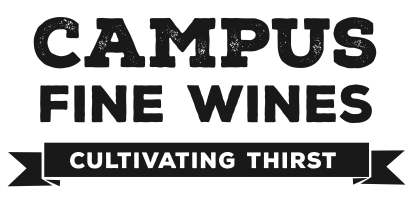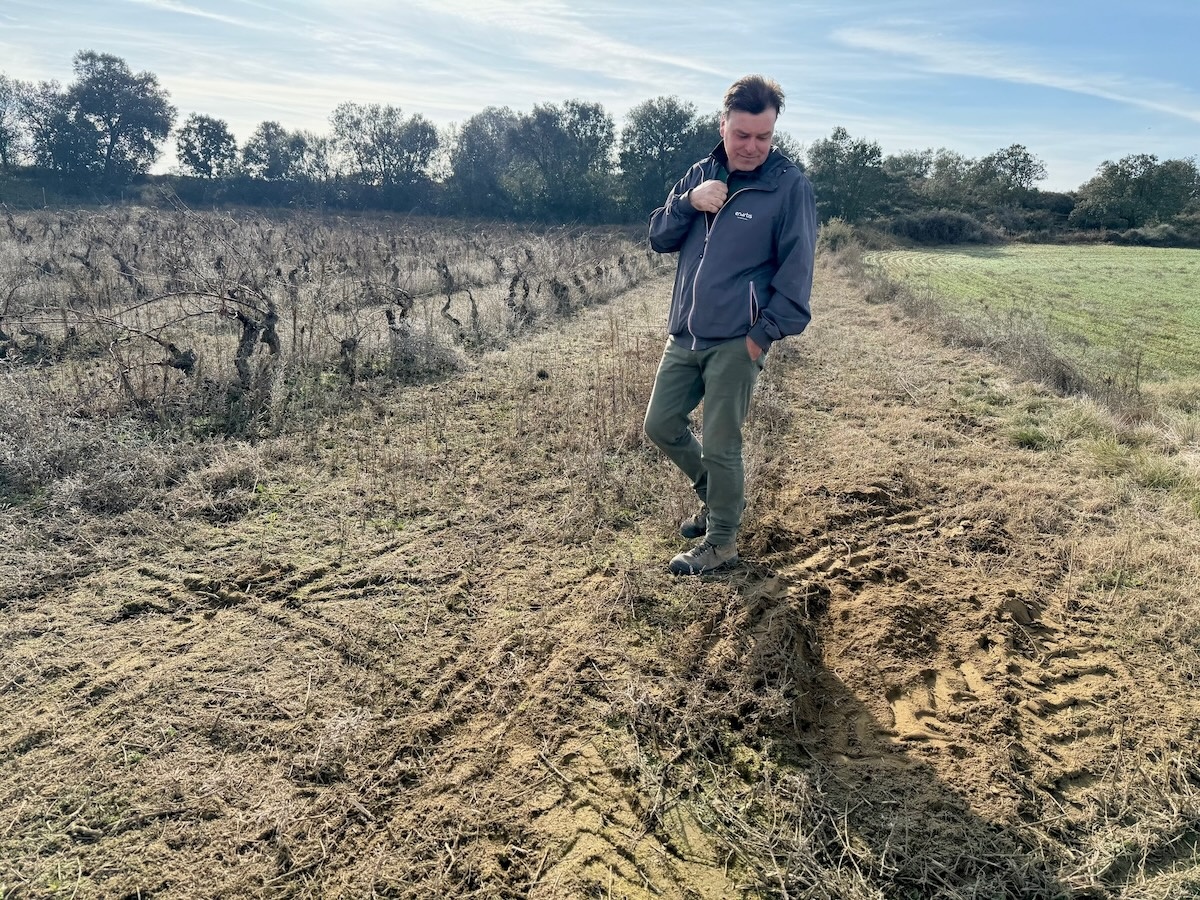
pictured above: Carlos Palacio, of Estrada Palacio
This month’s club includes two French wines and two Spanish wines, a red and a white from each country. Two first wine notes (Delaunay and La Senda) were written up by Irene, the last two by Andrea, who also took the producer pictures on a recent trip.
Happy sipping!
___________________________________________
Irene's notes:
Antoine et Philippe Delaunay Sud-Est Chateau-Thébaud Muscadet Sévre-et-Maine 2015 $32.99
My father-in-law was from Bretagne (aka, Brittany). So were his parents, grandparents, and all of their grandparents all the way back. So I’ve spent a lot of time driving around Bretagne, seeking the many incredible sites while being kept company by Radio Montagne Noire playing selections from the last decade's pop hits of the US, North Africa, and ‘continental’ France. I always wondered, when listening to the Radio Montagne Noire station ID, where the hell the Montagne was. And now I know. I was on the Massif Armoricain (namesake to ArmorLux Pull Marin sweaters), what remains of the giant Hercynian range of mountains from the Precambrian era. Today it is hard to believe that mountains once towered above these gentle slopes. But 600 million years of weathering have resulted in dark soils of enormous complexity including gneiss, granite, gabbro, amphibolite, mica schist, and many others. This formation extends from the western Bretagne province of Finister through the Pays Nantais at the eastern border of Brittany and beyond to Anjou where it gives way to the Paris Basin that defines the Central Loire.
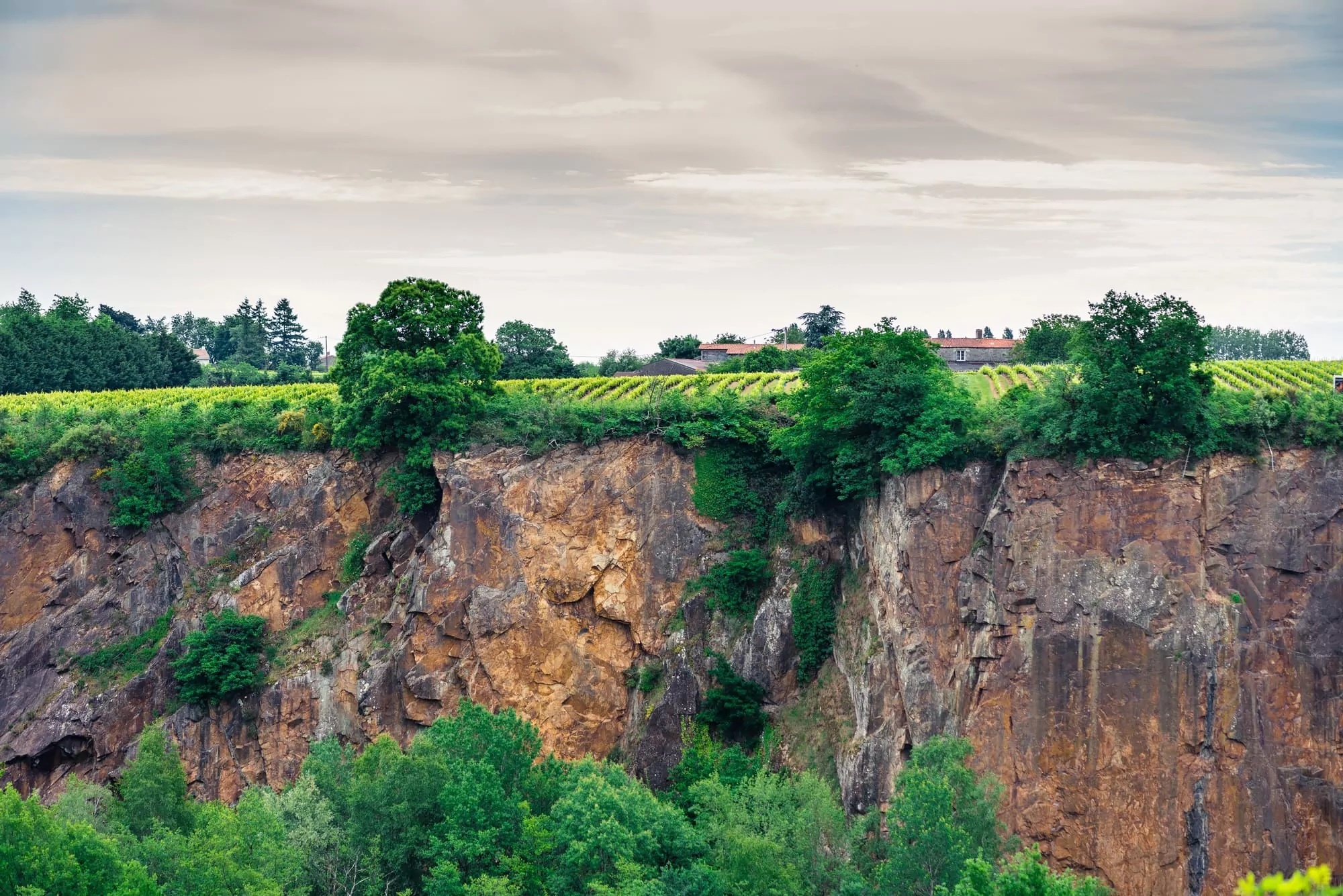
Chateau Thébaud cliffs
Here is where the Loire-Atlantique AOCs of Muscadet, Muscadet Sèvre-et-Maine, and that AOCs Crus Communaux are found. These vineyards are nearly exclusively planted to the Melon grape variety (aka, Gamay Blanc, Melon de Bourgogne, Muscadet) which is a sibling variety of Chardonnay and shares that grape's neutral flavor characteristics. Melon is mildew resistant making it well suited to the Loire-Atlantique of Pays Nantais, and in all but the earliest springs is adept at resisting frost. (Recent climate changes have, unfortunately, led to several such early springs and the damage in Muscadet has been intense. Early warm temperatures encourage early budding which presents a risk of frost damage and crop loss should temperatures dip post bud break. This was the case in 2021 when 80% of the crop was lost following 11 nights of sub-zero temps in April.)
Quick Muscadet hierarchy and interactive map
• AOC Muscadet: encompasses the entire region, allows yields up to 70 hl/ha, can make no claims to sur-lie aging unless yields are restricted to 55 hl/ha. Permitted to use Melon on label. Can include up to 10% Chardonnay in blend.
• AOC Muscadet Sèvre-et-Maine: 70% of Muscadet plantings concentrated in an area south of the city of Nantes. Yields are limited to 55 hl/ha. Sur-Lie indication is permitted at these yields adhering to rules that the wine must spend no more than one winter on lees and may not be bottled before March 1 of the year following fermentation, which is between 5 and 14 months of aging on the lees.
• Muscadet Crus Communaux: there are 10 of these. Similar to the cru of Beaujolais these are generally named for one or so nearby villages. Unlike Beaujolais, Muscadet Crus are delineated scientifically by soil type and micro climates. The rules governing production include even lower yields of 45 hl/ha, vines must be six years of age before use, higher ripeness levels must be achieved. The crus Goulaine and Le Pallet must stay on lees until April 1 of the second year following harvest; the other approved crus must age for at least an additional six months, until October 1 of the second year after harvest.
• The Crus Communaux of Muscadet are Clisson, Gorges, La Pallet, Goulaine, Cháteau-Thébaut, Mouzillon Tilléres, Monnierés Saint Fiacres, La Haye Fouasiére, Vallet, Champtoceaux.
Our Muscadet selection this month is from the Cru of Cháteau-Thébaut. Delaunay Vignerons is led by Antoine Delaunay, the 4th generation of the Delaunay family farming their estate in Vertou. Antoine joined his father, Phillippe, in 2016 and only recently took the reins. Phillippe had inherited the 10.5 ha estate from his father in 1983 and has since expanded their holdings to 22 organically farmed hectares of Melon in Muscadet Sèvre-et-Maine.
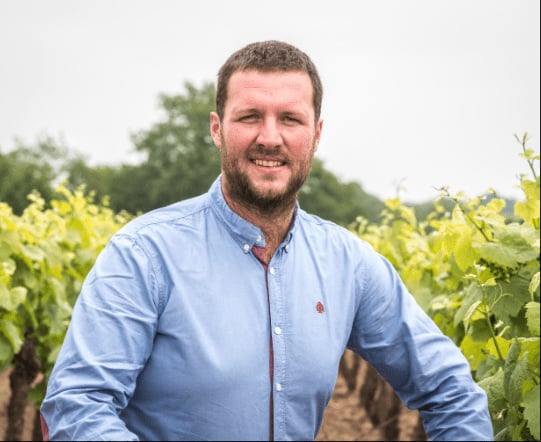
Antoine Delaunay
A small though important piece of the family holdings lies in the Cru Communaux of Cháteau-Thébaut where the defining soil composition is granodiorite known as Cháteau-Thébaut granite. Its grainy texture is similar to granite though of a darker hue.
The Delaunay approach to lees aging is to exceed by at least a year, and in this case 24 months, the minimum 24 months aging requirement of the cru designation. As is the norm in Muscadet, below ground, glass-lined fermentation and aging tanks are used as they provide effective temperature control and protection from oxygen. Post-fermentation, the dead yeast cells, called lees, are stirred frequently in a process the French call battonage. This circulation encourages full integration of lees character and an oxygen protection effect from the lees early and throughout the lees aging process. Similar to the lees effect on the wine aging in Champagne, significant character is added to Muscadet via lees aging in the impression of cream and yeast aromatics, a full and textural mouthfeel, and the ability for the wines to age beautifully for several years post release.
This Antoine et Phillippe Delaunay Sud-Est 2015 Cháteau-Thébaut is still very youthful at nine years post harvest. Its color is a pristine pale gold with flecks of green. The nose shows pronounced citrus, fennel and flint aromatics with a hint of clean earth and crushed oyster shells. On the palate it has a structural balance of acidity, creamy texture, and alcohol necessary to carry it across several years of bottle aging. Its flavors reflect the aromatics and that trademark Cháteau-Thébaud salinity offers a touch of salted caramel on the long, generous, citrusy finish. Frankly, I keep thinking ‘this is what I love about Chablis’. I guess that’s why the Crus Communaux of Muscadet (and in general the wines of Muscadet) are considered some of the best buys in wine today. Pair with mussels in fennel-saffron broth, or when tomatoes are in season, with tuna, tomato, and basil tartare.
__________________________________
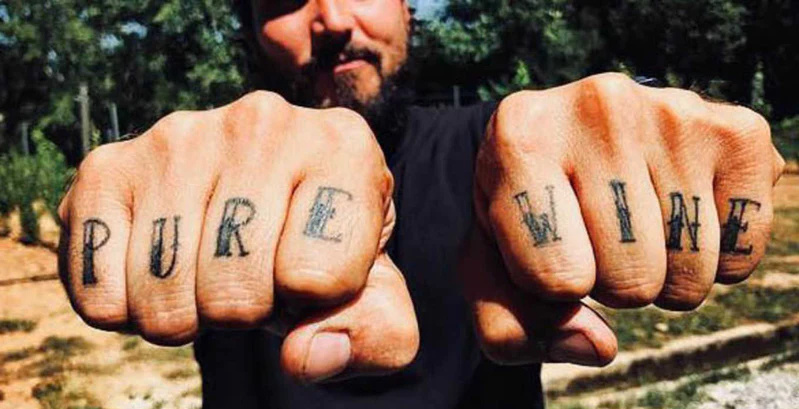
Diego Losada, La Senda
La Senda Vindemiatrix Vino Tinto 2022, Bierzo, Spain $21.99
Bierzo is located in the province of León which unified first with Asturias then with Castile to form what is now known as Old Castile (New Castile is the area around Madrid). Many of the heavy fortifications that were built to defend against the Moors remain today, hence the moniker ‘Kingdom of Castles.’ This heartland formed the base from which the Moors were ultimately driven back across the Straits of Gibraltar.
Click here for wine map of Spain.
Bodegas La Senda (means the path or the way) is located in the town of Ponferrada in Bierzo where a main attraction is the Castillo de los Templarios (Castle of the Templars). This DO lies at the border that Castilla y León shares with Galicia to its west. While most DOs in Castilla y León are concentrated along the Duero River where a continental climate prevails, Bierzo’s climate also has some of the humidity of ‘Green Spain’ creating an overall moderate continental climate. The immediate topography of Bierzo forms, as in many distinguished wine lands, an amphitheater (think Irancy near Chablis, Caluso in Piedmont, Apalta in Chile, etc.) with southerly facing sides ranging from 400-800 meters. This formation enhances the temperature shift from day to night as the steep sides delay warming through the morning then capture heat until evening when cool air cascades down the slopes rapidly lifting hot air out of the basin as the sun sets. This diurnal shift has the effect of lengthening the ripening period by providing longer cool, nighttime hours and thereby lowering the overall temperature of the season. The result being slower ripening, more flavor development, less sugar accumulation, and greater acid retention for balanced fruit at harvest.
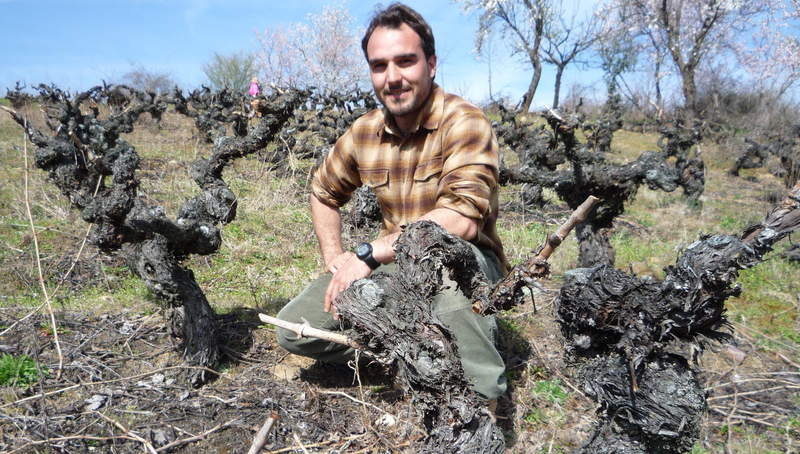
Diego Losada works organically and by hand in Alto Bierzo. A major benefit of hands-on organic farming (eschewing chemical interventions and applying natural interventions without machines) is the need to be physically in the vineyard, walking the vine rows, observing changes to the soil, the vines, and the fruit throughout the year, as well as seeing, close up, how the vintage is progressing, thereby keeping challenges from becoming problems, and getting to fully know the ecosystem. In time the organic farmer knows the vineyard so well they actually save effort and lower costs. They will have allowed plant material to grow between the vines whose root systems pull nutrients up from deep in the ground making them available to animals they may graze there, completing a virtuous cycle of soil regeneration that encourages beneficial insects and fauna to visit and further enhance the vineyard ecosystem.
For La Senda, Diego Losada rents 15 separate and remote parcels in Hervededo, Bierzo; and Galicia; all are old vines, totaling 5 ha. These vines average 60 years of age and are grown as bushes rather than on neat trellises. This is an ancient approach used in warm climates that protects the fruit from harsh sun exposure. While bush vines cost little to establish they do require all work be done manually including harvest. The benefits of hand harvest are myriad, including healthier soils with less compaction, clean cuts to protect against vine disease, and fruit selection at ideal ripeness. All of which leads to the potential for higher quality wines.
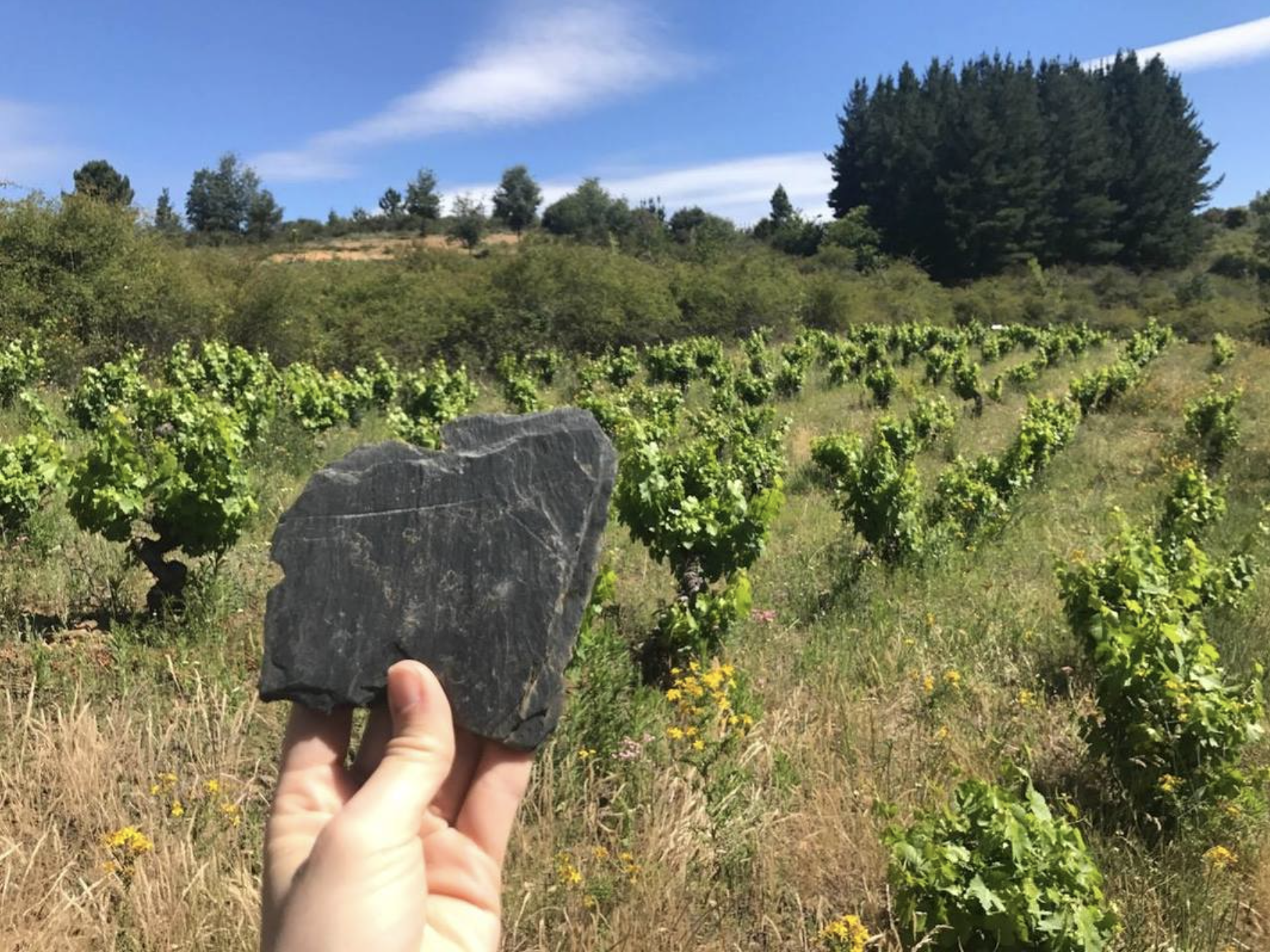
Slate in the vineyards
To maintain the energy and life from the vineyard, Diego is ‘hands off’ in the winery. He uses no machines (I guess that’s hands on, really), SO2 only at bottling, and no other additives. Rather than stainless steel vessels which he feels will ‘kill’ the true nature of the wine he employs unlined concrete vats and, if used, only older oak and chestnut casks and foudres, which allow some oxygen exchange resulting in wines with pronounced, plush flavors and aromatics. His Vindemiatrix 2022 is produced from fruit sourced from 7 plots surrounding the villages of Hervededo just north of the bodega in Ponferrada. Red and white grapes grow interspersed so harvest and fermentation are done all at once. The blend is approximately 80% Mencia and 20% white grapes (Palamino and Doña Blanca).
Mencia makes a juicy glass of wine. This La Senda Vindemiatrix Vino Tinto 2022 is bottle unfined and unfiltered and despite that shows a limpid ruby color in the glass. The aromatics are enchanting with bright red berries, wild strawberries, wild flowers, and plum skins. The palate is dry with bright, mouth watering acidity and those same wild fruit characteristics shine through on the finish along with a savory, earthy quality. This is a tasty offering that will make a great cocktail or appetizer option and will be excellent with grilled fish, simple roast pork loin, or a plate of fresh cheese and cold cuts. Also tacos.
__________________________________
Andrea's notes and photos:
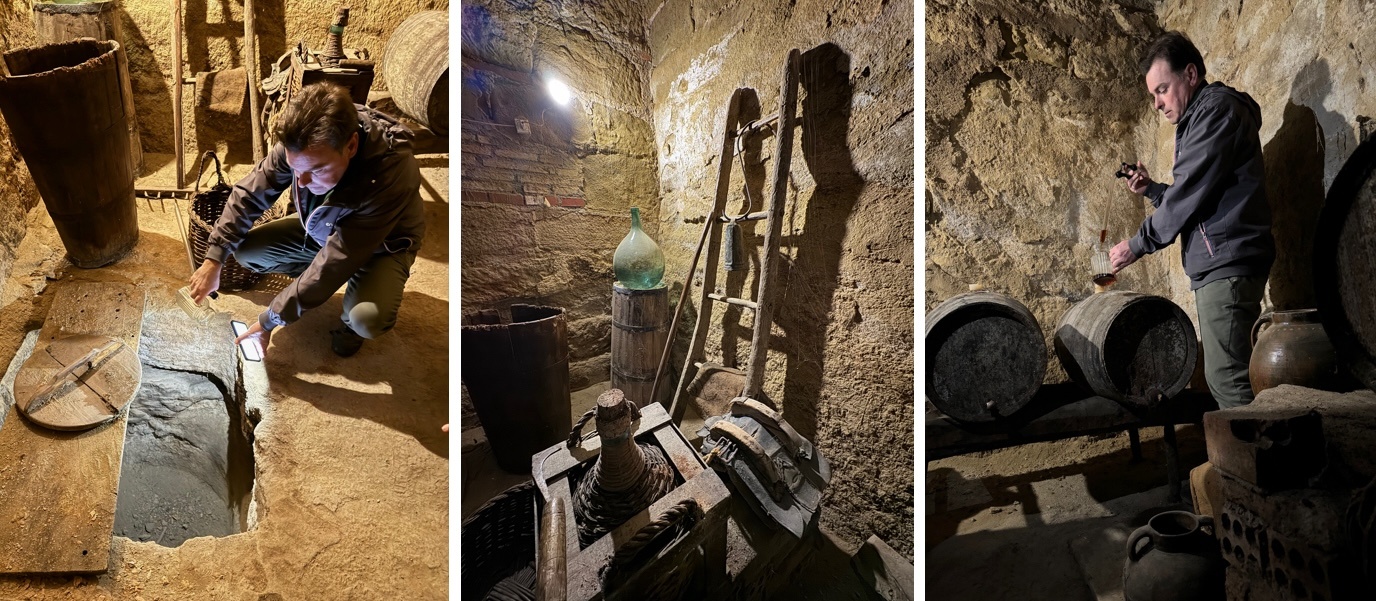
Winemaker Carlos Palacio in the family's old cellar. On the left, an old tank where the neighbors would fill jugs.
On the right, a 120 year old solera method wine.
Estrada Palacio Vispius Blanco 2021, Aragon, Somontano, Spain $22.99
Area: 7ha • DO: Aragon (Somontano) • Elevation: 450m above sea level • Soil: poor, sandy • Vine age: 25-80 • Grape varieties: Macabeo + old field blend • Annual production: 2,000 bottles • Farming practices: sustainable/non-irrigated
The Palacio family roots go back roughly five centuries in the town of Bespén, in northern Spain, just south of the Pyrenees mountains. The town itself is tiny, and centered around a humble stone monastery. Fewer than 100 people live there currently, as each new generation heads off to cities and other locales in search of economic opportunities. The winery took on the name “Palacio” over 100 years ago, when grandfather Martin continued the family tradition of growing vines and making wines in the rustic (by-any-definition) ancient cellar. He was followed by son Francisco who kept working in the old subterranean cave; since 2006 Francisco’s three children José, Carlos, and Ana have carried on the legacy, which includes a new winery. In addition to grapes, the family has been farming cereal, olive, and almond trees for generations, and they maintain greenhouses so that they can enjoy fresh vegetables year round, such as we did on our recent visit.

Fabien, at the monastery
Bespén is in DO Aragon, in the newer wine region of Somontano, which means ‘under the mountain.’ Much of Somontano is greener and lusher than inland Spain, since it tends to experience heavy winter rains that are supplemented by a network of rivers and streams flowing down off the mountains. However, the Palacios vineyards tend to be sandy and dry, with very little organic matter. A few cooperatives make most of Somontano’s wine, all of them established in the late 80s and early 90s. At that point international varieties were the main selling point, but by 2010, those same well-known varieties (like Cab and Syrah) had become its biggest hurdle, as it was forced to compete out in the world with those same grapes from more well-known regions––according to winemaker Carlos Palacio, they got clobbered by Yellow Tail. So what followed was a resurrecting and replanting of native varieties; not that Estrada Palacio ever wavered from their roots, of course. Now you’ll find Garnacha, Tempranillo, Garnacha Blanca and some lesser-known varieties such as Moristel, Parraleta, and the almost extinct Alcañón, as well as Macabeo. Chardonnay and Riesling are also in the mix. And there is a tiny bit of Incrocio Manzoni Bianco, a cross of Riesling and Pinot Bianco created in Veneto by Professor of Oenology Luigi Manzoni sometime between 1924 and 1935. There is very little of this grape planted in Italy, and even less in Spain.
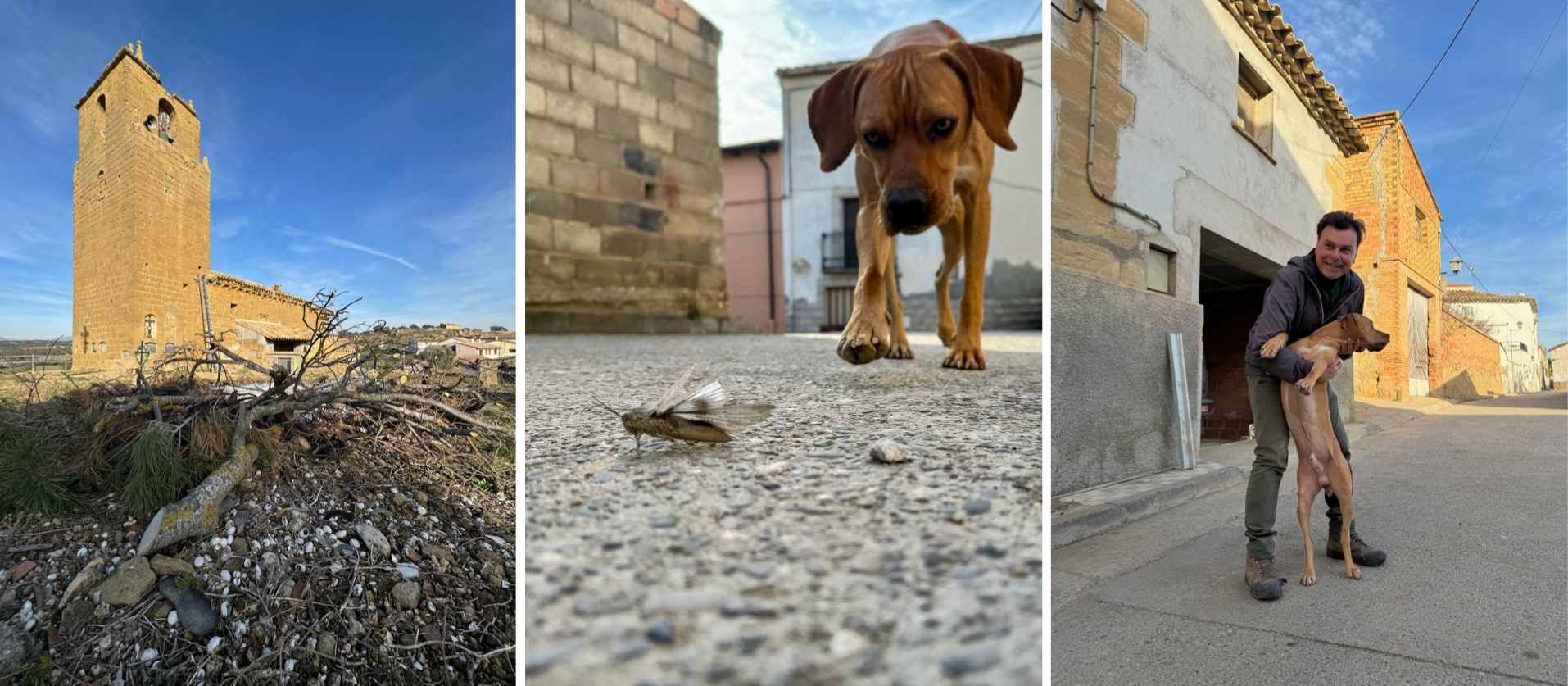
On our visit, Carlos, who makes the wines, showed us around the vineyards, cellars, and the old town. 2023 into ’24 had been uncharacteristically wet, so the vineyards we saw were muddy and mossy. Back at the family home, we were treated to a proper feast in their gorgeous, sunny courtyard, cooked up in an outdoor open-fire oven by José Ignacio, who tends the vines, and is also one hell of a grill master. We briefly met Ana (who handles the admin side of the business) and their mother, who left us with a homemade lemon olive oil cake (link to NY Times recipe, not mom's; have with at least 5 or 10 year madeira to approximate the pairing) that our hosts served with a family solera-system wine started 120 years ago…it was like the best madeira you could ever imagine, in the best setting imaginable. But that wine is not for sale…so let’s get back to Vispius!
But first, more pictures: The courtyard where we had lunch (The colors! The textures!), and José Ignacio at the grill.
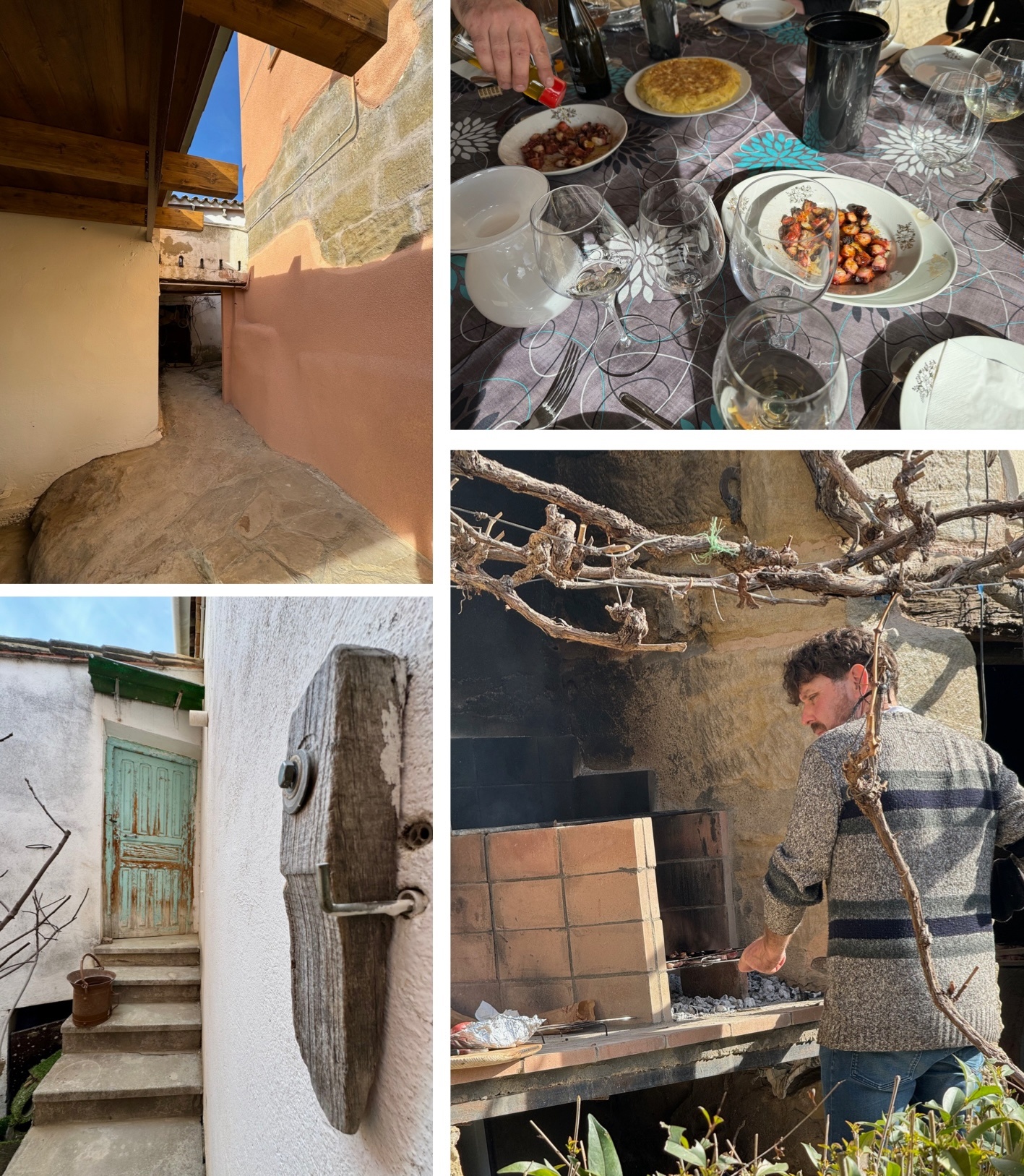
Vispius (purportedly the original name of the town) Blanco is old vine Macabeo and Incrocio Manzoni Bianco from vines 60-80 years old. It’s hand-harvested and fermented in stainless steel. Annual case production is around 2000 bottles/166 cases. This is a dry, savory, medium-bodied white. On the nose it’s exotic and tropical; on the palate it’s more about acidity, minerality, and texture than fruit. This is a wine that wants food. It was sublime with green olives, manchego, Spanish tortilla, grilled chorizo and octopus…throw something salty/garlicky/briny/from-the-sea at it and you won’t be disappointed.
And still more pictures of Palacio...
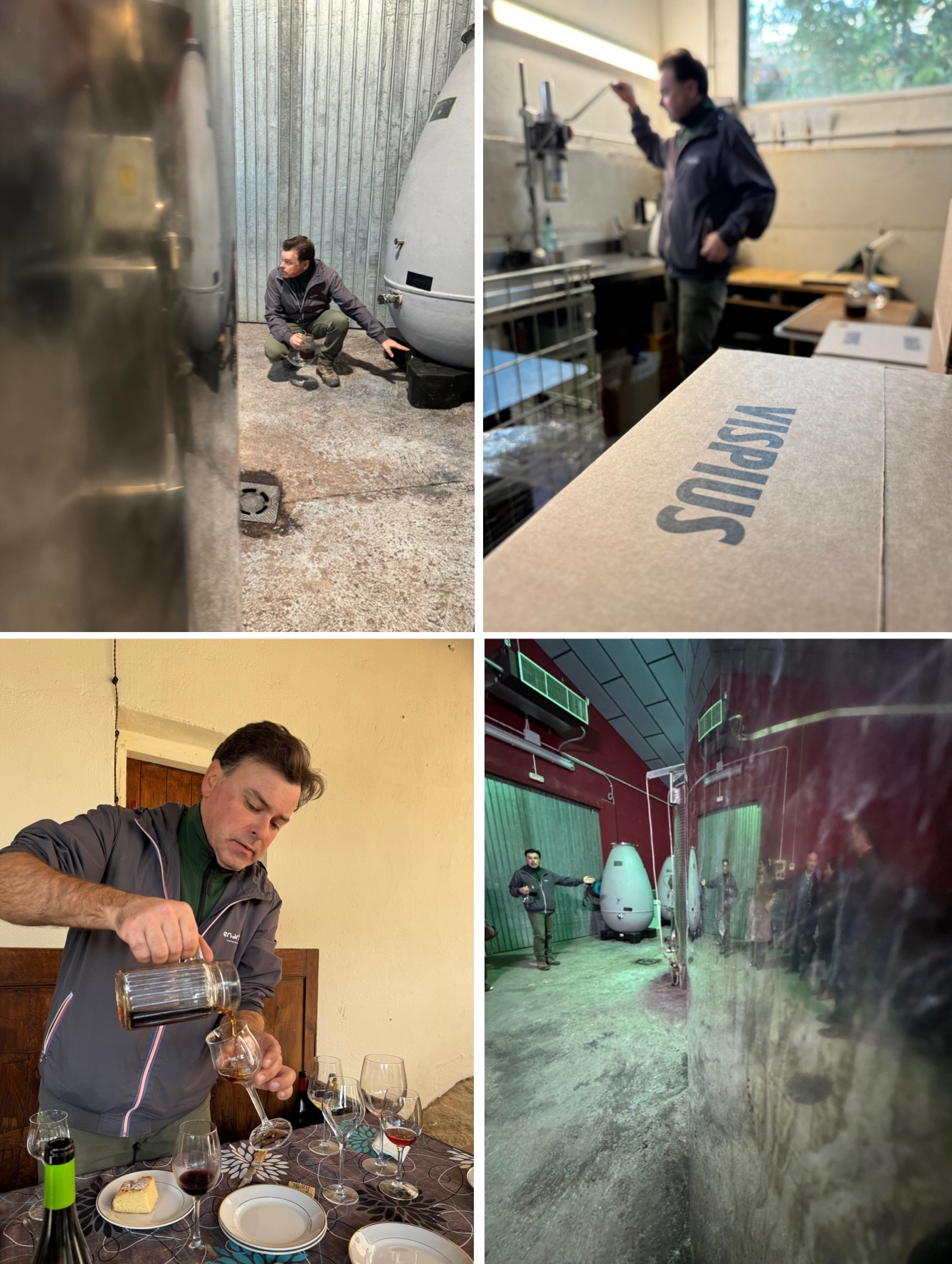
Carlos in the new winery, and pouring the family 120 year solera wine, paired with lemon cake.
__________________________________
Gonzague Maurice, Bordeaux
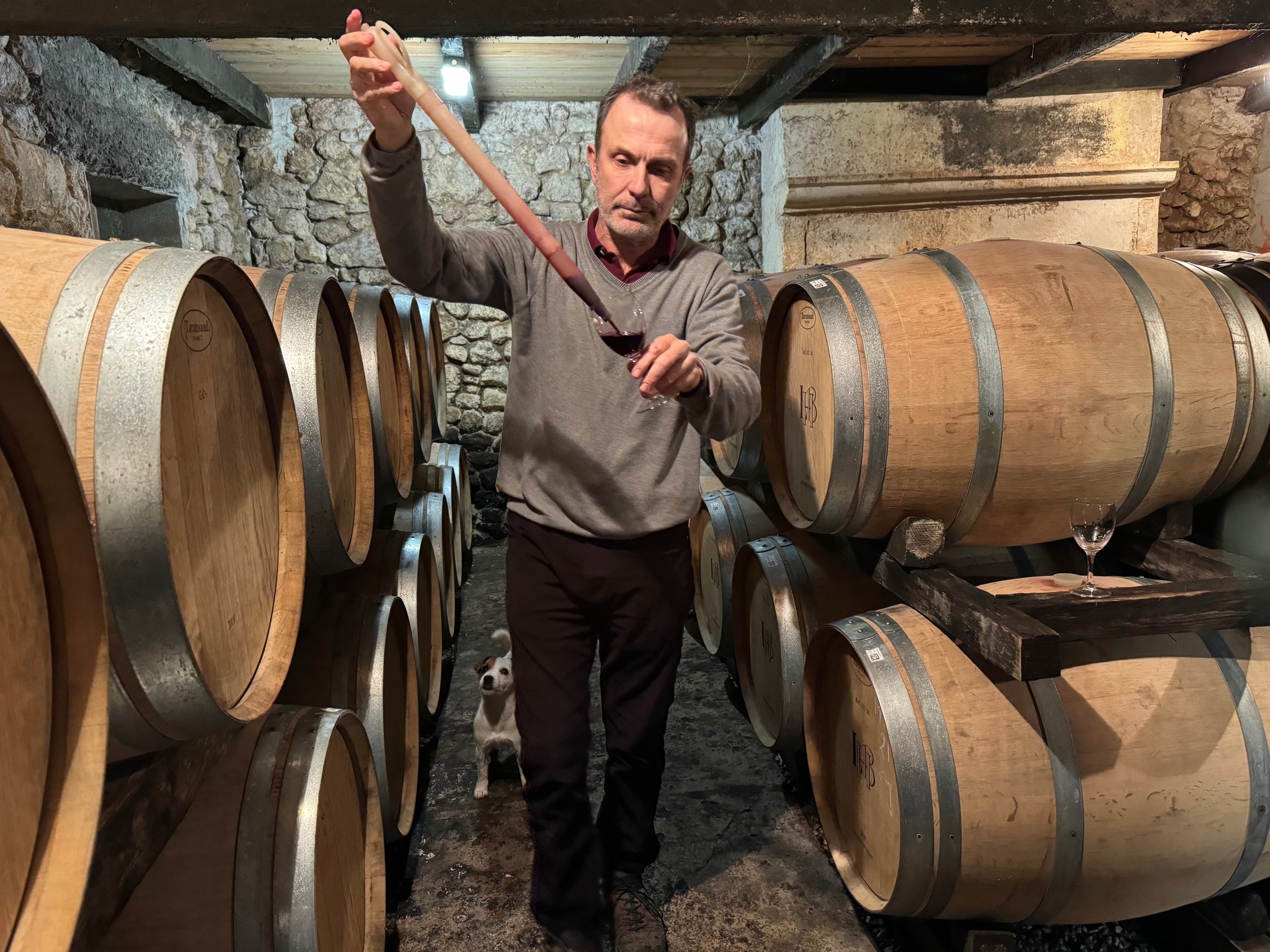
Barrel sampling with Gonzague Maurice and Truffle
Gonzague Maurice “Victor” Castillon Cotes de Bordeaux 2018 $19.99
Area: 2.20 ha • AOC Castillon Cotes de Bordeaux • Location: on the Gardegan and Belvès de Castillon plateau, 5 km from Saint-Emilion • Soil: Clay-limestone, identical to the best terroirs of Saint-Émilion and Montagne • Vines: 20 years • Planting density: 5500 plants/ha • Grape varieties: 100% Merlot • Farming Practices: Organic*
Gonzague Maurice began his wine career in Sancerre at the cooperative Cave de Sancerre before heading to Bordeaux, where he worked for four years at Château Maucamps in Haut-Médoc, followed by more specialized apprenticeships at the Chevalier estate in Pessac-Léognan, at Château Poupille in Côtes de Castillon, and at Domaine De l'Ile Margaux.
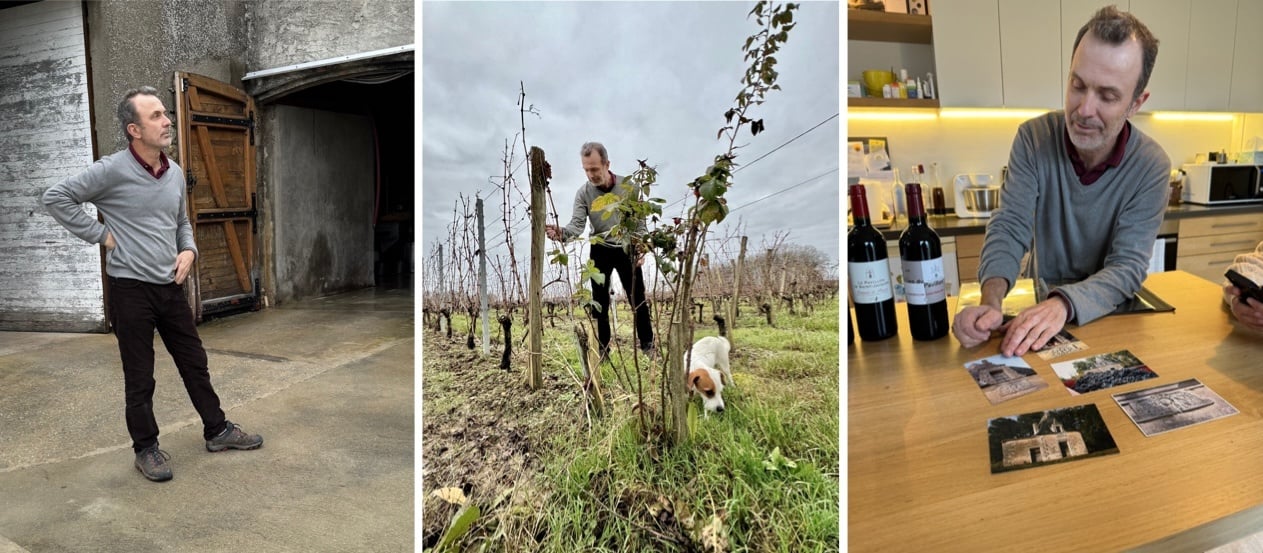
Gonzague Maurice in front of his cellar, in his vines, and showing a photo album (real prints!) of the property, including the little La Folie.
In 2005 he purchased his winery on Bordeaux’s Right Bank, in Montagne, a satellite appellation of St-Émilion, along with 3.2 hectares of vines. The vines were in poor condition and more than 3,000 had to be replanted. The winery was also in rough shape, with all of the concrete tanks having to be thoroughly cleaned and descaled. It was a labor-intensive process immediately followed by taking on another 3.3 hectares of vines on an ideal limestone plateau in nearby Puisseguin.
Click here for wine map of Bordeaux.
Gonzague Maurice’s main property, Chateau du Grandchamp, is located on the pilgrimage route to Santiago de Compostela; the estate has a tiny 18th century stone building called “La Folie” which served as a relay point for pilgrims, but also, and probably more frequently, as a naughty rendezvous point for male nobility of the neighboring castle. Gonzague was more than happy to show us photos of this miniature chateau. We inquired if he was willing to sell it, and while his ears appeared to perk up, we have yet to hear back.
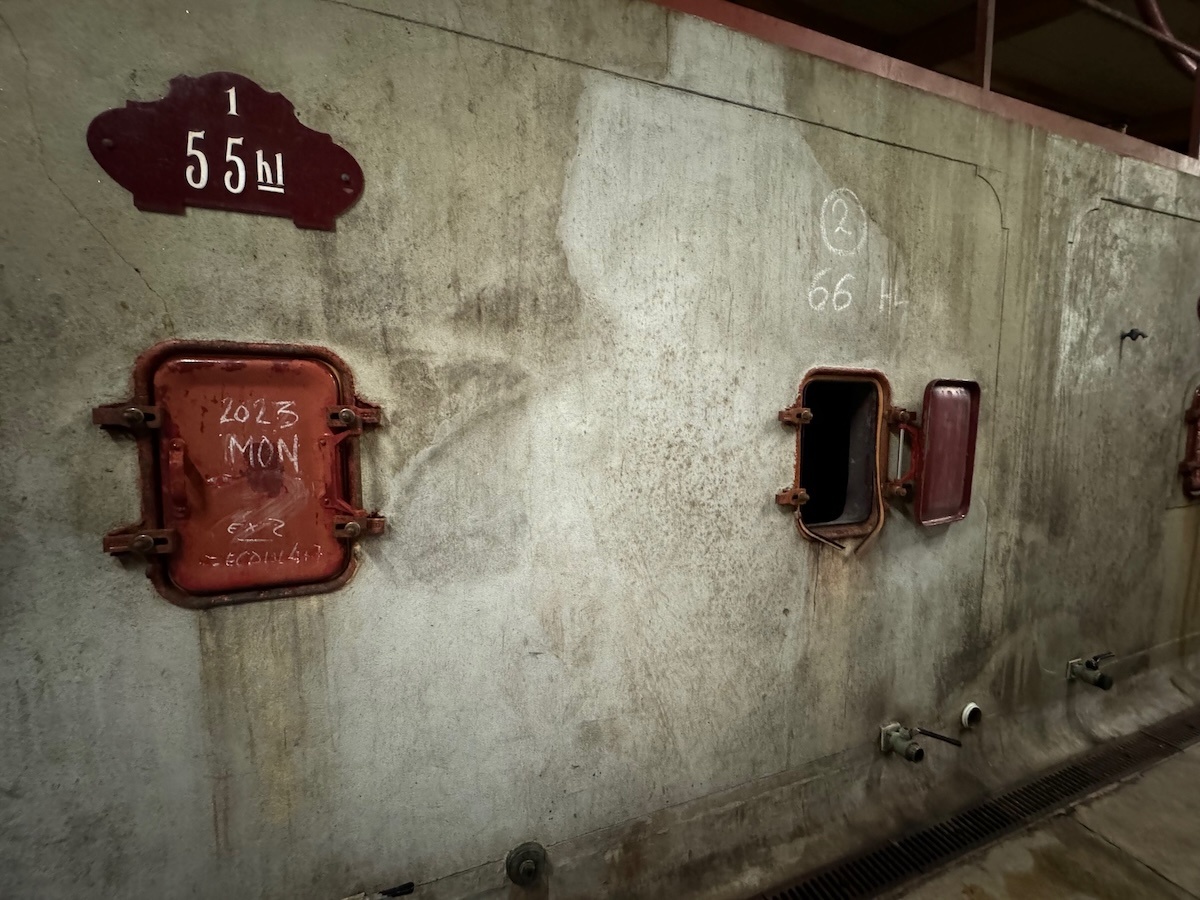
Cement tanks, Gonzague Maurice
The difference between St-Émilion and Castillon are subtle as far as soils is concerned, but glaring when it comes to land value.
From a 2014 article on www.winedoctor.com (subscription only): …Here, in the northern section of the St Émilion appellation, there is a gentle slope down towards the Barbanne, not the slightly more impressive scarp that there is on the other side of the limestone plateau. The superficial limestones give way to the Molasses du Fronsadais, a soft conglomerate of sedimentary rocks, marl and clay; where we stood, however, the superficial soils were quite sandy. Jean-Luc-Thunevin positioned himself next to the vines to the west. “Here I am in St Émilion”, he announced, going on to suggest that the land was valued at something in the order of about €2million per hectare (for grand cru classé vineyards, not generic St Émilion). Taking a few steps east, into the next vineyard, he continued “and now I am in Castillon”, the land value here said by Jean-Luc to be more like €20,000 per hectare.
The vineyards of Castillon, perhaps more correctly and completely described as Castillon Côtes de Bordeaux, extend eastwards from those of St Émilion; thus there are in fact countless examples of where one famous St Emilion vineyard ends, and another one – classified as Castillon begins. …the focus of the vineyards of Castillon is, just as it is with St Émilion, is the limestone plateau. This plateau extends eastwards, behind Sainte-Colombe, beneath Belvès-de-Castillon, behind Castillon-la-Bataille and out of Bordeaux altogether. It also snakes northwards, alongside the Barbanne, and the same limestone also sits over the river, beneath the St Emilion satellites. The plateau is perhaps not so broad in places as it is in the St Emilion heartland, being cut through by streams and rivers, but its presence is undeniable, and indeed there is much more limestone plateau outside the appellation of St Emilion (here in Castillon, but also in the St Émilion satellites) than there is within St Émilion. Around the plateau are the limestone and clay slopes, degraded limestone tumbling down to the plain below, as well as the aforementioned molasses. The plateau and the côtes are the most desirable spots.
In addition to the above-mentioned info, the vineyards of Castillon are literally in a good position as temperatures rise, since the slopes face east/west as opposed to the (until now) most sought after south-facing slopes of St Émilion.

Up until recently Gonzague’s vines were certified organic, but he let that slip when external pressures (mostly climate related) became too extreme and expensive. So while he still eschews chemicals, he, like many producers in Bordeaux (and France as a whole), is not in a financial position to keep paying for the certification, or to lose an entire harvest that could otherwise be saved with measures that don’t fall under the “organic” umbrella. Not necessarily an organic vs non-organic issue, but while visiting recently, Gonzague told us about how the frequent and destructive post-bud-set frost leads to producers renting helicopters on a moment’s notice at upwards of $2,000 per hour so they can hover over vineyards and push warmer air back down onto the vines. Small producers compete for helicopters with multinational conglomerates (who are buying up properties because French law makes it difficult for children to purchase from their parents), all just waiting for the temps to drop. Then of course small producers get outbid…and so they are the ones who suffer most; kind of a problem not just in wine, and certainly not just in France. So, the fact that we can drink $20 bottles of small-production, thoughtfully produced Bordeaux at this level is a gift.
All that being said, the vines are all worked by hand, with every other row plowed or grassed––no weedkillers. Harvest is by hand as well, with sorting in the vineyard and the cellar. As the winemaker says: “all work is then carried out by hand with the sole objective of obtaining perfectly ripe and healthy grapes (stemming, splitting, leaf stripping, green harvest if necessary).”

The town of St Émilion
Gonzague says this about the 2018 vintage and fermentation: “2018 was marked by a hot and humid spring and early summer, very conducive to the development of mildew!…the harvest was therefore a little smaller than usual, but still at an acceptable level (40 hl /ha, or 12,000 bottles in total)… The rest of the summer was hot and dry; the harvest was beautiful in the end, with very ripe and healthy grapes! The vinifications went well, the aging in concrete vats lasted almost 2 years, the bottling took place at the beginning of September 2020… Above all, I seek to preserve the fruit both during vinification and during aging (no “wood” in this wine, only Merlot!)”
Gonzague gets a mention in Jon Bonne’s lates book, The New French Wine, Redefining the World’s Greatest Wine Culture, in which Bonné states that Victor sees old wood, but alas, according to the winemaker himself, it does not. We all make mistakes!

And here is Jancis Robinson’s review of the 2018 vintage: A year of extremes with a very wet winter and spring, very damaging hail in some areas, severe downy mildew threats in most. A very hot, and dry, summer and autumn allowed winegrowers to decide on their own harvest dates. Powerful, deep-coloured wines with no shortage of (generally well-managed) tannins suggest this may be one of the region’s longer-lived vintages.
Victor is a full-bodied, structured, chewy Merlot. On the nose there is a strong mineral note that suggests stone dust and clay, followed by bright cassis and flowers. On the palate it’s fine-grained, muscular, and elegant, with cassis again, as well as blackberry, anise, and fresh raspberries. These notes wrap around and wind through dusty earth, cocoa powder, black pepper, hints of green pepper, as well as rosemary and thyme. There’s a lot going on in this sturdy little wine. It would benefit from decanting. Pair it with lamb, duck, aged cheddar, lentil and mushroom stew…
We had lunch in St Émilion, at a little place called Chai Pascal. It felt like home, and it felt like missing home...

